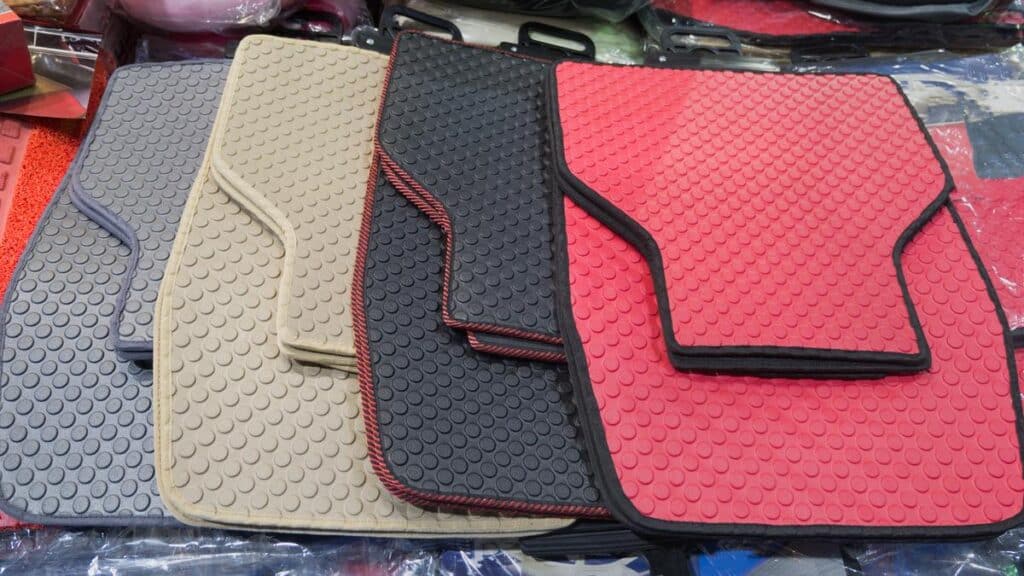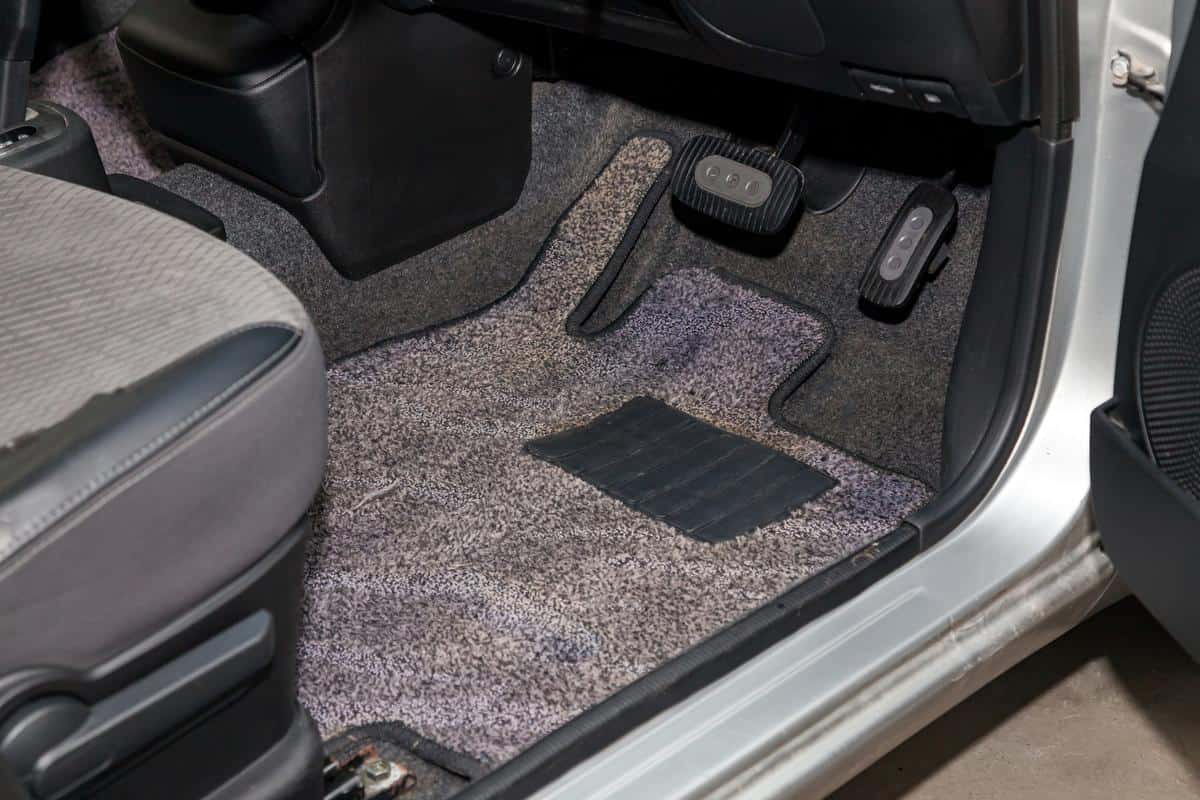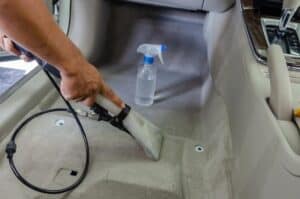Car mats are an essential component of every vehicle, protecting the interior flooring from dirt, moisture, and wear. Over time, however, these mats can deteriorate and lose their effectiveness. So, when exactly do you need to replace your car mats? In this comprehensive guide, we will explore the signs that indicate it’s time to invest in new mats and ensure the longevity of your vehicle’s interior.
Table of Contents
Signs of Wear and Tear
One of the primary indicators that your car mats require replacement is visible wear and tear. Over time, the constant friction from shoes and debris causes the material to degrade, resulting in holes, tears, or frayed edges. If you notice significant damage on your car mats, it’s a clear sign that they have served their purpose and need to be replaced promptly.
But how can you assess the condition of your car mats? Start by examining the surface for any signs of excessive thinning, cracks, or splits. Additionally, pay attention to the corners and edges which tend to experience more wear due to foot movements and shifting. If these areas show substantial degradation, it’s time to start shopping for new mats.
Foul Odors and Mold Growth
Unpleasant odors emanating from your car’s interior can be a persistent nuisance. In many cases, these odors can be attributed to trapped moisture and mold growth within the car mats. Moisture can seep into the mats through wet footwear, spills, or even accumulated condensation.
When left unaddressed, damp conditions provide an ideal environment for mold and mildew to thrive. Besides emitting unpleasant smells, mold growth can also pose health risks to passengers, particularly those with respiratory issues or allergies. If you notice a lingering musty odor or any signs of mold on your car mats, it’s crucial to replace them promptly to maintain a clean and healthy vehicle interior.
Shifted or Sliding Mats
Car mats should ideally stay in place, securely anchored to the flooring beneath. However, over time, constant movement and foot traffic can cause the mats to shift or slide around, compromising their functionality. Loose mats not only create an inconvenience while driving but also pose safety hazards by interfering with the pedals or getting tangled beneath your feet.
To check if your car mats are properly secured, give them a gentle tug. If they come off easily or slide around even with minor movements, it’s a clear indication that they have lost their grip and need to be replaced. Ensuring that your mats fit snugly and don’t impede your driving experience is essential for both comfort and safety.
Excessive Stains and Spills
Spills and stains are inevitable when it comes to everyday car use. Whether it’s a spilled coffee, a dropped snack, or muddy shoes, accidents happen. While car mats are designed to protect the flooring from damage, excessive staining and discoloration can occur over time, making them less effective and visually unappealing.
If your car mats have become an unsightly mess with stubborn stains that resist cleaning, it may be time to invest in new ones. Not only will fresh mats enhance the aesthetic appeal of your vehicle’s interior, but they will also provide better protection against future spills and stains.
Thin and Worn-out Padding
Car mats aren’t just about surface protection; they also provide cushioning and insulation for your feet while driving. However, extended use can lead to the gradual deterioration of the padding beneath the mat’s surface. Over time, the padding may thin out, losing its ability to offer adequate support and comfort.
To assess the condition of your car mat’s padding, press your hand firmly on various areas of the mat. If you feel excessive give-or-notice areas that lack the necessary padding, it’s a clear indication that your mats have seen better days. Upgrading to new, well-padded car mats will not only provide enhanced comfort during drives but also reduce fatigue and potential discomfort.
When Do You Need To Replace Your Car Mats?
In conclusion, knowing when to replace your car mats is crucial for maintaining a clean, safe, and comfortable driving experience. Signs such as visible wear and tear, foul odors and mold growth, shifted or sliding mats, excessive stains and spills, and thin and worn-out padding are all indicators that it’s time to invest in new mats.
By promptly replacing your car mats when needed, you can ensure that your vehicle’s interior remains protected, stylish, and odor-free. So, keep an eye out for these signs and prioritize the replacement of your car mats to maintain the longevity and appeal of your vehicle.
How To Choose A Car Floor Mat?

When choosing a car floor mat, there are several factors to consider to make the right choice for your vehicle. One of the first things to look at is the design and construction of the mat itself.
Inspect the rims and ridges of the floor mat you are considering. It is important to choose a mat that has prominent edges or raised borders. These edges form the periphery of the mat and play a crucial role in containing any fluids or debris that may collect on the mat’s surface. The raised borders prevent liquids from spilling over and seeping onto the vehicle’s carpet, protecting it from potential damage.
Another aspect to consider is the material used for the floor mat. Car floor mats are available in a variety of materials such as rubber, carpet, vinyl, or even a combination of these. Each material has its advantages and disadvantages. Rubber mats, for example, are excellent at trapping dirt and moisture, making them easy to clean. On the other hand, carpet mats provide a more luxurious feel but may require more maintenance to keep them looking clean and fresh.
Durability is another important factor to consider. Look for a floor mat that is made from high-quality materials and has a sturdy construction. A durable mat will be able to withstand regular wear and tear, including heavy foot traffic and exposure to different weather conditions. Reinforced edges and thick, resilient material will contribute to the overall longevity of the mat.
Considering the fit and size of the floor mat is also essential. It should match the specific dimensions of your vehicle’s floorboard to ensure full coverage and protection. A properly fitting mat will prevent any gaps where dirt and liquids could seep through, maintaining the cleanliness of your vehicle’s interior.
Additionally, check if the floor mat has a securing mechanism. Some mats come with built-in hooks, anchors, or non-slip backing to keep them securely in place. This is particularly important for the driver’s side mat, as a loose mat could interfere with the pedals and compromise safety.
Finally, take into account your personal preferences and style. Car floor mats are available in a range of colors, patterns, and designs. Choose a mat that complements the interior of your vehicle and reflects your taste. Remember that you will be looking at and using these mats regularly, so finding one that you find visually appealing is important for overall satisfaction.
FAQs
1. How often should I replace my car mats?
It depends on various factors such as usage, climate, and maintenance. However, as a general guideline, considering replacement around every two to three years is recommended to ensure optimal performance and protection.
2. Can I clean my car mats instead of replacing them?
Yes, you can certainly clean your car mats to remove dirt, stains, and odors. Regular vacuuming and spot cleaning can help maintain their condition. However, if the mats are extensively damaged, have mold growth, or are beyond repair, it’s best to replace them for better functionality and aesthetics.
3. Are all car mats universal in size?
No, car mats come in various sizes and shapes to fit different makes and models of vehicles. It’s essential to choose mats specifically designed for your vehicle to ensure a proper fit and maximum coverage.
4. Where can I purchase replacement car mats?
Replacement car mats can be found at automotive supply stores, online retailers, and even at car dealerships. It’s recommended to choose high-quality mats that are durable and compatible with your vehicle model.
5. How do I install new car mats?
Installing new car mats is typically a straightforward process. First, remove the old mats by unclipping or sliding them out. Then, position the new mats properly, ensuring they align with the floor contours and any securing mechanisms in your vehicle. Finally, secure them in place using any clips or hooks provided or as per your vehicle’s design.
Conclusion
When Do You Need To Replace Your Car Mats? Knowing the signs of wear and tear, foul odors and mold growth, shifted or sliding mats, excessive stains and spills, and thin and worn-out padding are crucial for determining when it’s time to replace your car mats. By promptly addressing these signs and investing in new mats, you can maintain a clean, safe, and comfortable driving experience.
Replacing your car mats regularly not only enhances the aesthetic appeal of your vehicle’s interior but also ensures effective protection against dirt, moisture, and damage. So, don’t neglect the condition of your car mats and prioritize their replacement when needed to keep your vehicle looking and feeling its best.
Photo credit: Shutterstock

